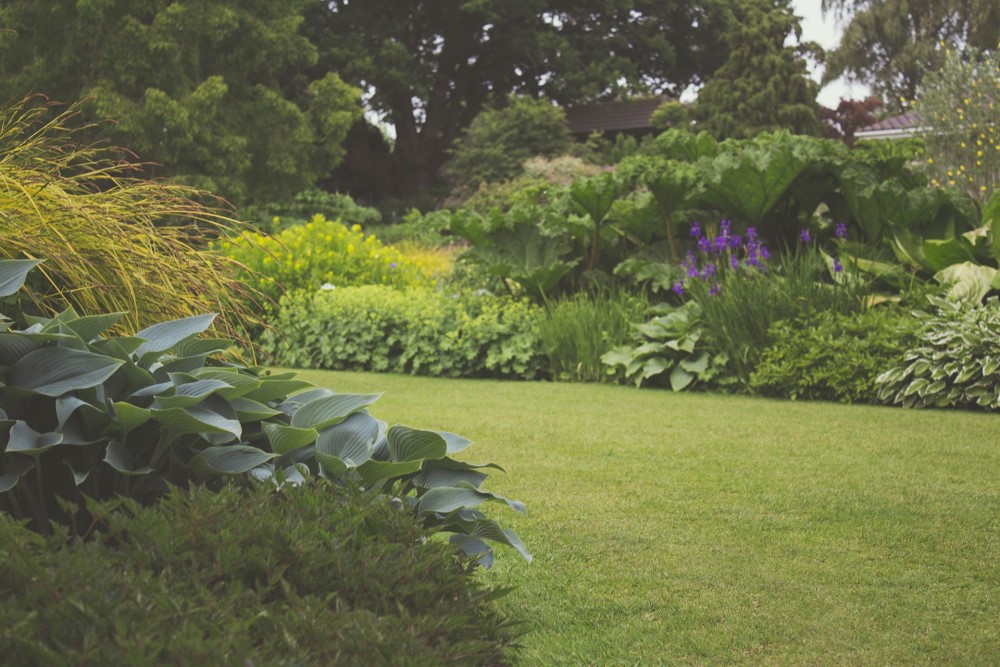
Credits to Creative Vix
Having a lush green lawn is something many homeowners desire, but achieving that perfect green lawn requires some effort and knowledge. If you’re wondering how you can make your lawn greener, there are several steps you can take. In this article, we’ll discuss some of the most effective ways to make your lawn greener, including proper watering, fertilizing, mowing, and soil care.
- Watering
Watering is essential to maintaining a green and healthy lawn. However, it’s important to water your lawn correctly to avoid under or over-watering, which can cause damage to your lawn. The key to watering your lawn is to ensure that your lawn receives 1-2 inches of water per week, depending on your climate and soil type.
To determine how much water your lawn is receiving, you can use a rain gauge or a simple container to measure the amount of water you’re applying. Water your lawn in the early morning or late evening, when temperatures are cooler, to prevent evaporation and maximize water absorption. - Fertilizing
Fertilizing your lawn is essential to provide your lawn with the nutrients it needs to grow and maintain its green color. Nitrogen is one of the most important nutrients for a green lawn, and it’s important to choose the right type of fertilizer based on the needs of your lawn.
To ensure that you’re applying the right amount of fertilizer, you can use a soil test kit to determine the nutrient levels in your soil. This can help you determine the right type of fertilizer and the right amount to apply.
It’s also important to follow the instructions on the fertilizer packaging carefully and avoid over-fertilizing, as this can damage your lawn and cause excess growth. - Mowing
Mowing your lawn is important to maintain the health and appearance of your lawn. However, it’s important to mow your lawn correctly to avoid damage and ensure optimal growth. To mow your lawn properly, keep your lawn mower blade sharp and adjust the blade height based on the type of grass you have.
Additionally, avoid cutting your lawn too short, as this can damage the grass and cause it to turn brown. A good rule of thumb is to mow your lawn to a height of 2-3 inches, depending on the type of grass and the time of year. - Soil Care
The health of your lawn depends on the health of your soil. To ensure that your soil is healthy and able to support a green lawn, it’s important to care for your soil properly.
One of the most important things you can do for your soil is to aerate it regularly. Aeration helps to improve soil drainage, increase oxygen flow, and reduce soil compaction. You can aerate your lawn using a manual or mechanical aerator.
Another important aspect of soil care is to maintain the proper pH level. The optimal pH level for most lawns is between 6.0 and 7.5. You can use a soil test kit to determine the pH level of your soil and add lime or sulfur to adjust the pH level as needed. - Weed Control
Weeds can compete with your grass for nutrients and water, which can prevent your lawn from maintaining its green color. To keep your lawn green and healthy, it’s important to control weeds effectively.
One effective way to control weeds is to use a pre-emergent herbicide. This type of herbicide prevents weed seeds from germinating, which can reduce the number of weeds in your lawn. Another option is to use a post-emergent herbicide, which is designed to kill existing weeds.
It’s important to follow the instructions on the herbicide packaging carefully and avoid over-applying, as this can damage your lawn and cause harm to the environment. - Pest Control
Pests such as insects, rodents, and other pests can cause damage to your lawn, which can make it difficult to maintain a green and healthy lawn. To keep your lawn green and healthy, it’s important to control pests effectively.
One effective way to control pests is to use natural methods such as companion planting, which involves planting certain plants that repel pests. Another option is to use natural pest control products such as neem oil or essential oils.
If you choose to use chemical pesticides, it’s important to use them carefully and follow the instructions on the packaging. Additionally, you should avoid using chemical pesticides during windy conditions, as this can spread the chemicals to other areas. - Reseeding
If your lawn has bare or thin patches, it’s important to reseed those areas to maintain a green and healthy lawn. To reseed your lawn, first, prepare the soil by removing any debris and loosening the soil.
Next, spread grass seed over the area and cover it with a thin layer of soil. Water the area regularly and keep it moist until the grass has germinated and is well-established. - Shade Management
If your lawn is in a shady area, it can be difficult to maintain a green and healthy lawn. However, there are several steps you can take to manage shade and maintain a green lawn.
One effective way to manage shade is to prune trees and shrubs to allow more sunlight to reach the lawn. Another option is to choose shade-tolerant grass species such as fine fescue or shade-tolerant groundcovers.
Additionally, you can use strategic landscaping such as planting trees or shrubs strategically to manage shade and maintain a green and healthy lawn.
Maintaining a green and healthy lawn requires effort and knowledge. By following the steps outlined in this article, you can ensure that your lawn remains lush and green all year round. Remember to water your lawn properly, fertilize it regularly, mow it correctly, care for your soil, control weeds and pests, reseed as needed, and manage shade effectively. With these tips in mind, you can enjoy a green and healthy lawn that adds beauty and value to your home.
Comments